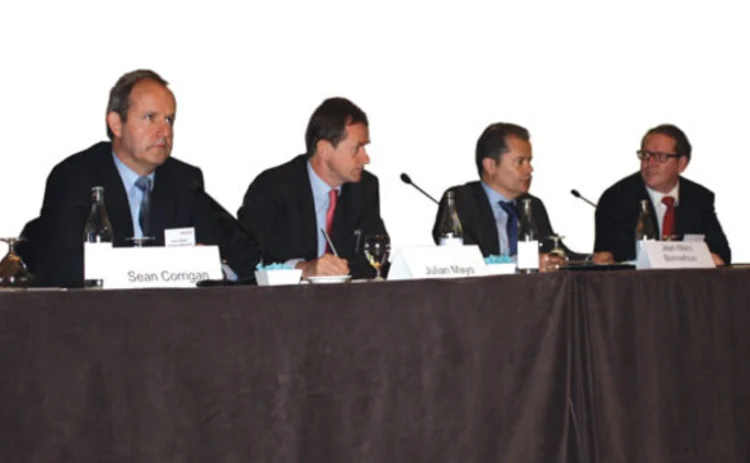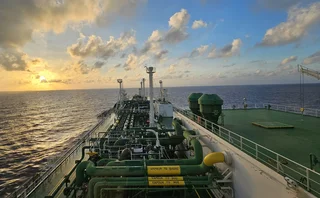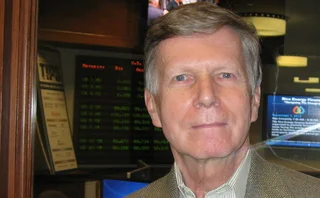Commodities Trading and Investment Summit: conference highlights
Up for debate

Fund managers, chief investment officers, investment consultants, and traders gathered in the Hotel President Wilson next to Lake Geneva on June 21 for Energy Risk’s inaugural Commodities Trading and Investment Summit, which attracted a panoply of speakers analysing commodity markets and investment strategies.
A broad examination
Keith Wade, chief economist and strategist at Schroders, kicked off proceedings with his macro view of the economy and the outlook for commodities.
Although China has become the world’s largest energy consumer, it still has a long way to go on a per-capita basis, Wade said. The average Chinese person consumes two barrels of oil per year compared to an average of more than 20 barrels in the US. If China were to match US consumption levels, it would require all the world’s current energy supply.
Wade next analysed the chances of several key emerging markets overheating. He noted that food price increases had a much bigger impact on inflation in developing countries because they formed a greater proportion of people’s personal expenditure and, hence, of the overall basket of goods used to measure inflation.
Nevertheless, Wade said Schroders foresaw a soft landing in China and did not put any serious weight to the scenario of the Chinese bubble bursting and dragging down the world economy.
Risk watch
Next up was Tony Hall, explaining the approach of Duet Commodities Fund to managing market risk. The fund is agnostic on price direction, it expects 20% returns year on year, and is run on 99 Value at Risk, one-year one-day historical, Hall said. As well as the usual stress tests, Duet runs scenario-specific analyses, testing the resilience of the fund to specific extreme market-moving events.
Following Hall’s talk was a panel discussion on emerging market risks. Julian Mayo, co-chief investment director at Charlemagne Capital, pointed out that China was still at an early stage of development. Convergence between the developed and developing world could actually happen with the shrinking of incomes per capita in the West, particularly with the US recovery losing steam, he said.
Jean-Marc Bonnefous, managing partner at Tellurian Capital Management, criticised the simplistic approach of treating commodities as just a gross domestic product (GDP) trade. Sean Corrigan, chief investment strategist at Diapson Commodities, agreed there was only a loose correlation between GDP and commodity prices.
Bonnefous stressed the magnitude of sharp slowdown in growth in China for global commodity markets. “If there’s a hard landing, they will sell everything,” he said, explaining that this presented the opportunity to buy lots of commodities cheaply and profit over the next five years.
The panellists clashed on whether quantitative easing (QE) in the US was helping or hindering China. Some thought China was telling the US to stop QE, while secretly wanting it.
But Mayo argued that the unpopularity of QE in the US was because it transferred wealth from the middle class in the long term, to traders and bankers in the short term.
Corrigan criticised the widespread adulation of the Chinese economy as misplaced, criticising its centralised model as creating major distortions and inefficiencies. The mass power shortages in China were because of price suppression, he argued.
More on Risk management
LNG trading strategies set to change amid major market shifts
The global LNG market is on the brink of significant changes set to alter trading dynamics and market behaviour, say analysts
Why commodity finance is ripe for stablecoin
Digital currency brings cost efficiencies to financing, but its real benefit to commodity firms lies in making huge pools of new capital available, write Jean-Marc Bonnefous and Ronan Julien
US shutdown leaves commodity traders without key data
Commodity traders are ‘flying blind’ without Commitment of Traders reports
Energy Risk at 30: Learning from the past
Energy Risk looks back at the seminal events and developments that have shaped today’s energy markets
Past disasters can prove the value of energy risk management
Analysing failures and losses at energy firms can underscore the value of consistent, high-quality risk management
How quants shaped the modern energy markets
The business models of today’s utility firms are built on quantitative analysis, but the introduction of these techniques in the 1990s was far from smooth
Interview: Vince Kaminski
Market veteran Vince Kaminski discusses the biggest risks to energy firms today and whether risk teams can ever prove their value
Mounting risk prompts refocus on integrated energy risk management
Energy firms are facing heightened risk due to shifting geopolitics, climate change and the energy transition. As market, credit and enterprise risks ramp up, the need for improved integrated risk management is growing, say risk managers







